A Complete Spring Tree Care Checklist: How to Keep Your Calgary Trees Healthy
Reading time: 6 minutesSpring's knocking at our doors, signalling a fresh start for us and our leafy companions. It's the season where your intervention can truly make a difference in helping your trees bounce back from winter's grip and burst into vibrant life.
So, get ready to roll up your sleeves and make your trees the envy of the block. Welcome to spring: the season of growth, renewal, and green dreams coming true!

Spring Care Starts with Inspection
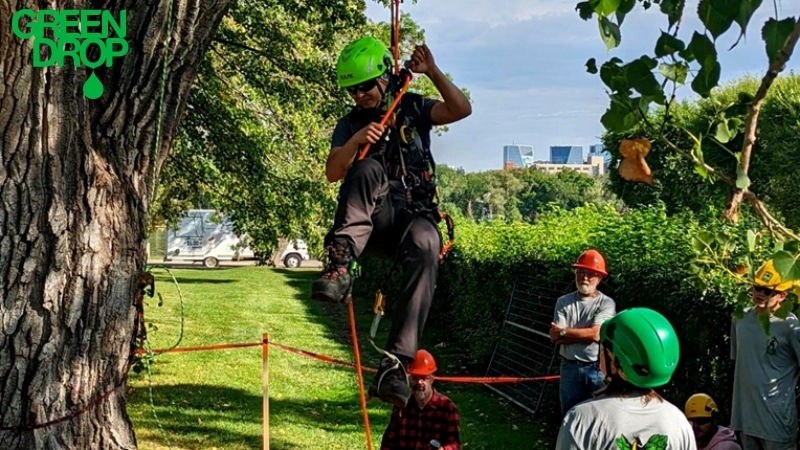
Before you start thinking about the flurry of tree care activities, there’s a crucial first step: a thorough inspection. Here are some common signs to watch for:
Bark Damage
Extreme cold, frost, and ice can cause the bark to split or crack. Look for peeling or flaking bark, as well as deep fissures or splits along the trunk.
Winter Burn
Evergreen trees, especially those exposed to winter winds and sunlight, may suffer from winter burns. Look for brown or discoloured foliage.
Loose Branches
Heavy snow and ice accumulation can weigh down branches, causing them to bend or break. Watch out for snapped or drooping branches, especially after severe winter storms, as they could be a safety hazard.
Desiccation
This is when trees lose moisture faster than they can absorb it. The result is dry and brittle branches.
Frost Heaving
The freeze-thaw cycle in Calgary can cause soil to expand and contract, leading to frost heaving. This may result in uprooted or tilted trees, particularly in areas with poorly drained soil.
Animal Damage
When food sources are scarce, hungry wildlife may nibble on tree bark or branches during winter. Look for signs of chewing or stripping, especially near ground level.
Salt Damage
Salt used to de-ice roads and sidewalks can leach into the soil and damage tree roots, leading to stunted growth or leaf discoloration.
This is where the keen eye of a professional arborist can be invaluable. They're not just tree doctors; they’re detectives who can spot the subtle hints of trouble you might miss. An arborist’s assessment goes deep, ensuring that any issues are caught early and managed effectively. They’re your tree’s best chance at not just surviving but thriving in the coming months.
Pruning Out the Old
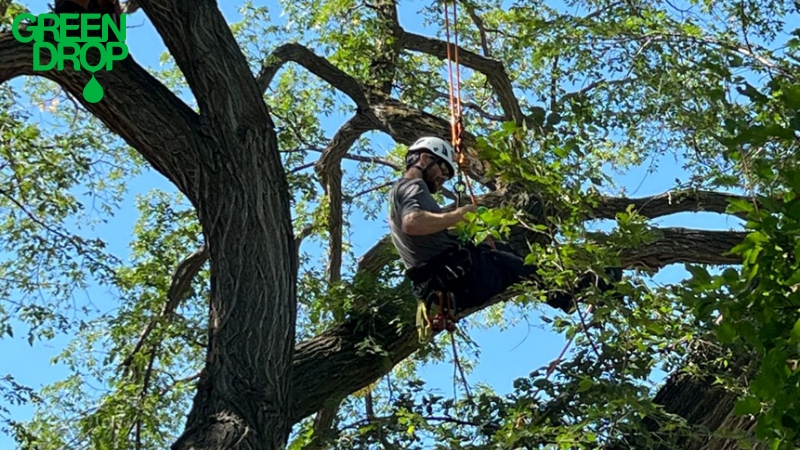
Spring pruning is not just about keeping your trees looking tidy but also healthy. By removing dead or damaged branches, you’re preventing pests and diseases from taking hold. Plus, pruning helps your trees develop a robust structure, ensuring sunlight and air can circulate effectively through the branches.
However, wielding those pruning shears requires a bit of know-how. Here are a few tips:
- First, identify the branches that need to go. Make clean cuts just outside the branch collar to promote sealing. And remember, the goal is to enhance the tree's natural shape, not to reinvent it.
- Timing is everything, especially for certain tree species. For example, Elm trees are off-limits for pruning from April 1 to September 30 to prevent the spread of Dutch Elm Disease. It’s a crucial window to protect these trees from a deadly threat.
- Improper pruning could lead to decay, increased disease and pest vulnerability, and weak branch attachments. So, if you’re not sure what you’re doing, it’s best to hire professional tree pruning.
Water Wisely After Winter
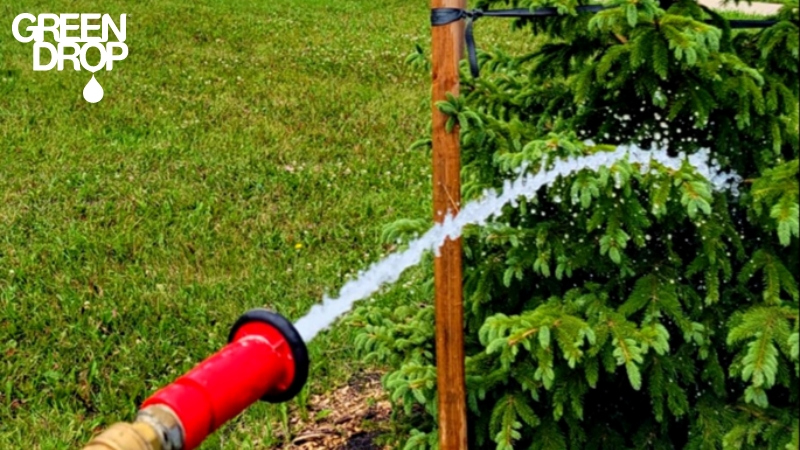
As the ground thaws and spring breathes life into Calgary, you need to start thinking about watering your trees. Be careful, though: Too little water and trees can struggle to rebound. Too much, and you risk waterlogging their roots just as they stretch out for new growth.
- A consistent watering schedule is vital for young trees, especially those still finding their footing in their first few years. Aim for about an inch of water weekly, allowing it to soak deeply into the soil. This encourages roots to grow downward, seeking moisture and establishing a strong foundation.
- A gentle, regular drink is better than a sporadic downpour for saplings. Weekly watering is recommended. Check for dry soil regularly.
- Mature trees, with their deep-rooted systems, are a different story. They can often fend for themselves, drawing on water reserves from deeper soil layers. Water about once or twice a month between April to September.
However, during particularly dry springs or for trees in well-drained areas, a bi-weekly check can help. If the soil feels dry a few inches down, it's time for slow, deep watering to replenish their reserves without overwhelming them.
Mulch Away for Tree Health
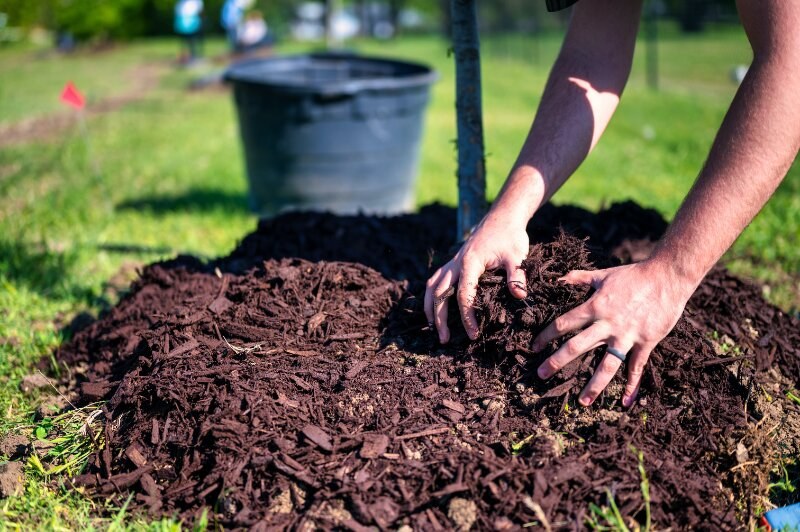
Mulching is a triple threat against moisture loss, temperature extremes, and invasive weeds. By creating a protective barrier over the soil, mulch helps retain water, keeping the roots moist.
It also insulates the soil, buffering the roots from sudden temperature changes that are all too common in Calgary's springtime. Plus, it suppresses those pesky weeds that compete with your trees for nutrients and water.
When applying mulch, think of it as tucking your tree in with a cozy blanket. Spread a 2-3 inch layer around the base of your tree, but keep it a few inches away from the trunk. This prevents moisture buildup against the bark, which can lead to decay.
Aim for a doughnut-shaped mulch ring extending as far out as the tree’s drip line if possible. This method encourages proper water drainage and prevents the dreaded "volcano mulching," where mulch is piled high against the trunk, inviting pests and disease.
Fertilizing Your Trees for Success

Spring fertilization for your trees is like serving them breakfast—the day's most important meal. Trees need essential nutrients to kickstart their growth after a long winter rest. It's a critical step in ensuring they have the energy to produce lush leaves and robust branches.
When choosing a fertilizer, selecting one that matches your tree's specific needs is vital. Generally, a balanced, slow-release formula with a mix of nitrogen, phosphorus, and potassium will support most trees' growth.
Always follow the product's instructions for the amount and frequency of application. Apply it around the tree's drip line, where its feeder roots are most active, rather than near the trunk. This encourages the roots to spread out and strengthens the tree's overall structure. And remember, more is not always better.
If you’re unsure how to proceed, Green Drop has fertilizer services you can count on.
Keep Pests and Disease at Bay
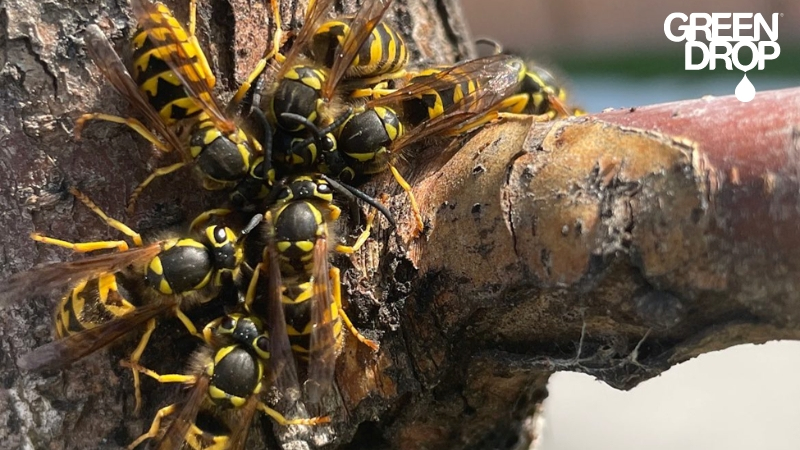
Spring in Calgary isn't just a wake-up call for our trees; it also signals go-time for various pests and tree diseases. From the tiny aphids that sap the life out of new growth to fungal diseases like black knot that disfigure branches, staying vigilant is key to keeping your trees healthy.
- Regularly inspect your trees for unusual signs—discoloured leaves, abnormal growths, or premature leaf drop.
- At the first hint of trouble, take action by removing affected areas or applying appropriate treatments. Always follow environmental guidelines to avoid harming your garden ecosystem.
That being said, some situations call for the cavalry. If you're facing a persistent or widespread problem, it's time to bring in professional help. Our ISA-certified arborists and tree care specialists have the expertise and equipment to diagnose and treat pest or disease issues effectively, saving you time and ensuring your trees get the best care possible.
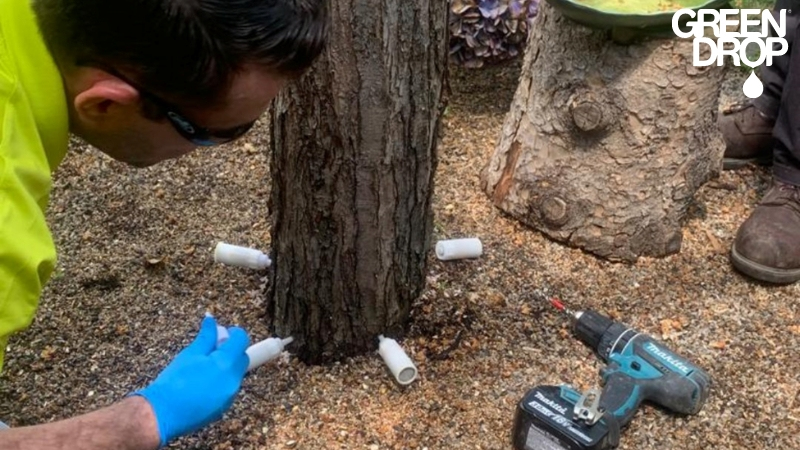
Spring Into Action with Green Drop
The steps we’ve discussed above are your blueprint to ensuring your Calgary trees not only survive but thrive, bursting into life with the warmth of spring.
If you're unsure about tackling any of these tasks or simply want the best care for your trees, Green Drop is here to help.
Contact us for a consultation. Our team of arborists is ready to ensure your trees grow healthy and strong.
We offer a range of tree care packages to make this spring a vibrant start to a lush, green year.
We’re also based in Edmonton, Red Deer, Regina, Saskatoon and Winnipeg.

